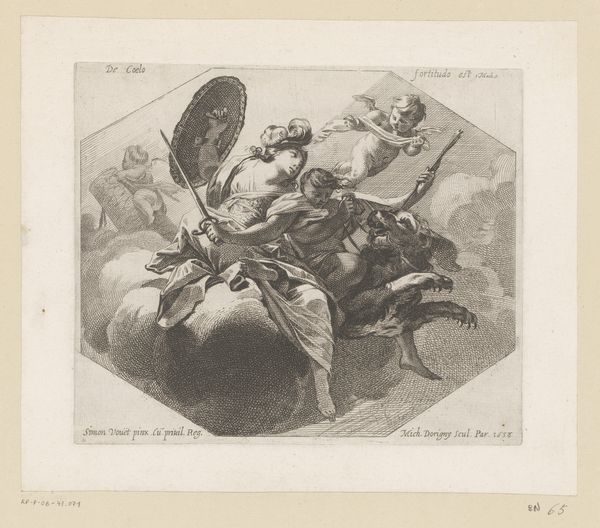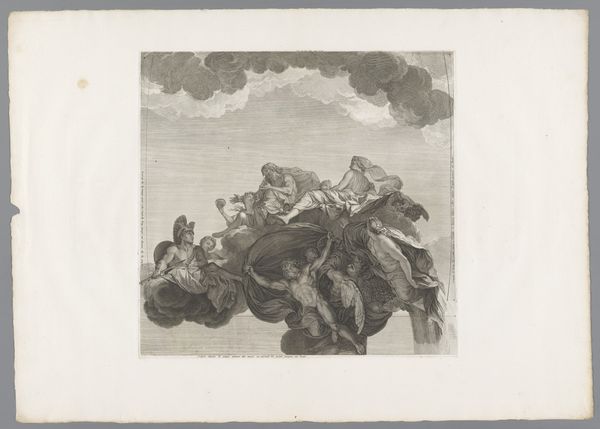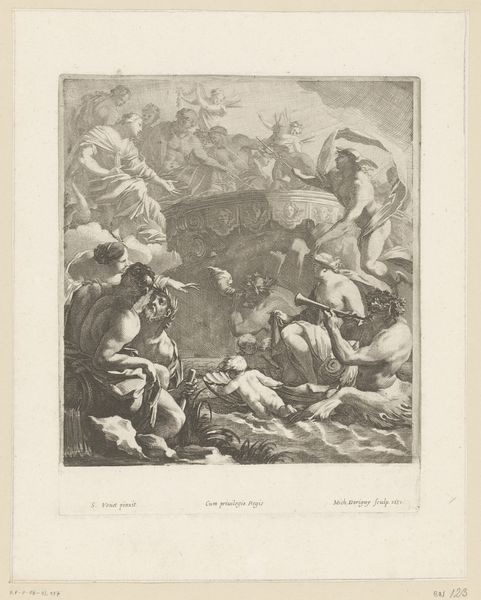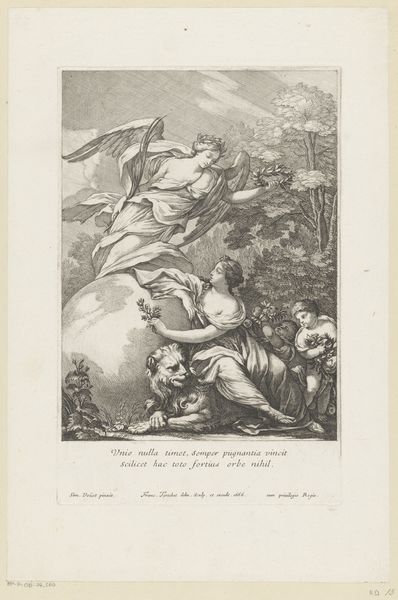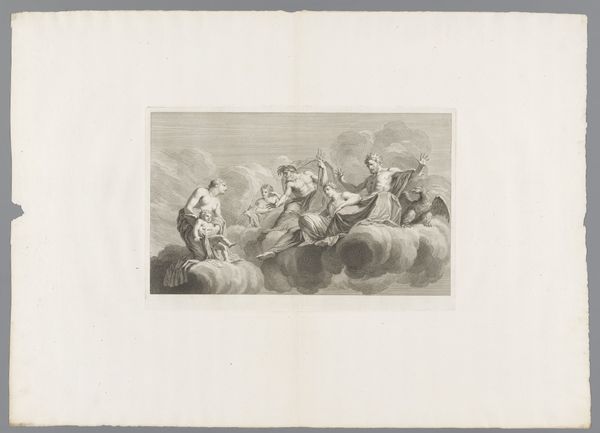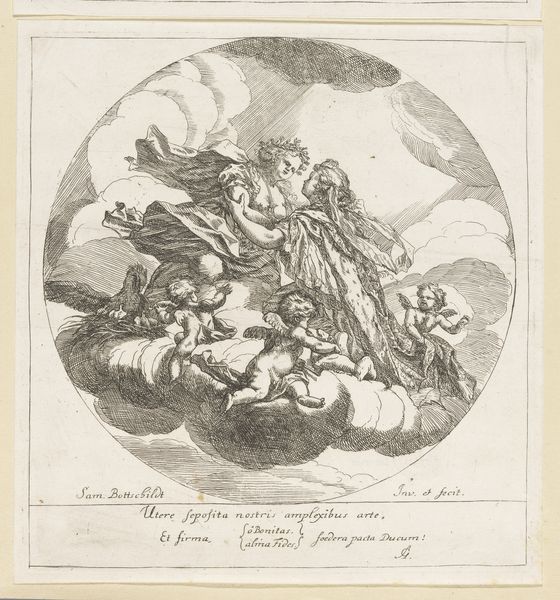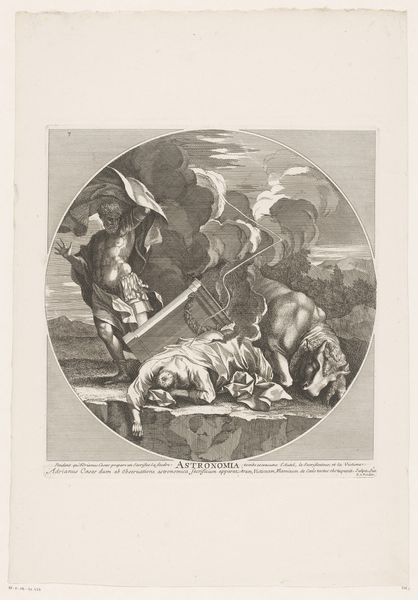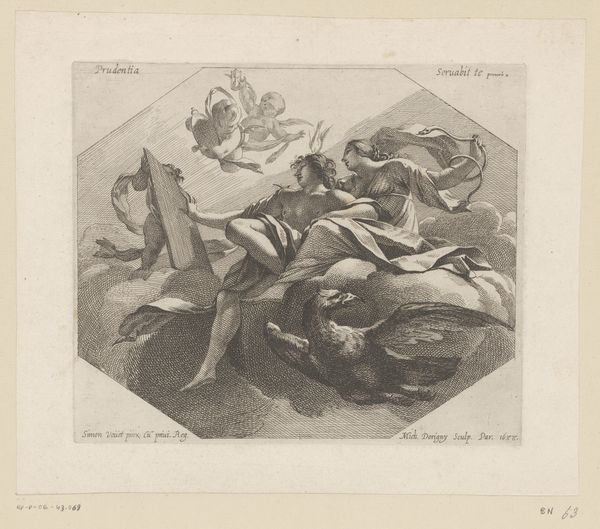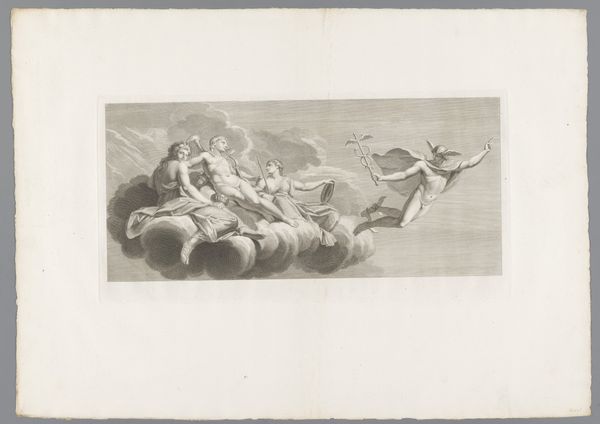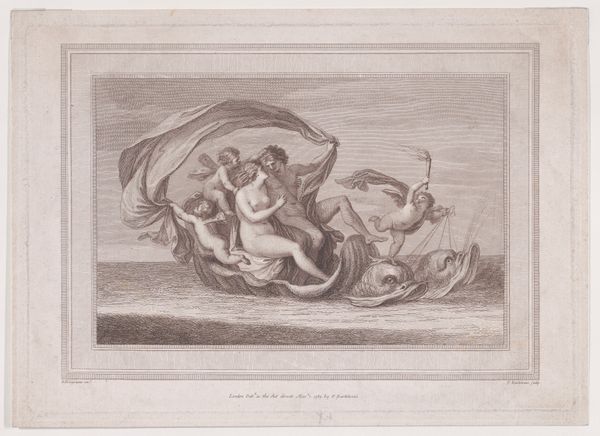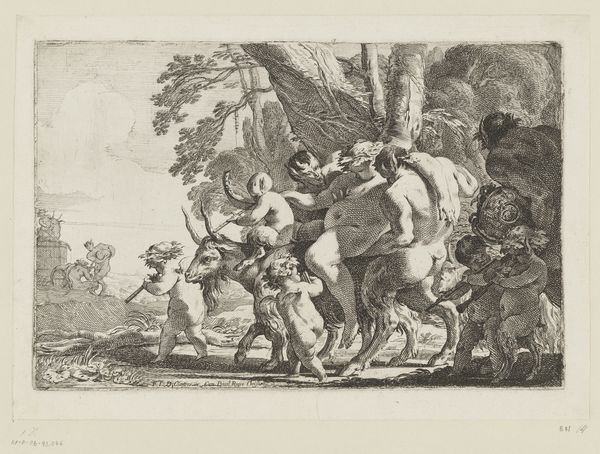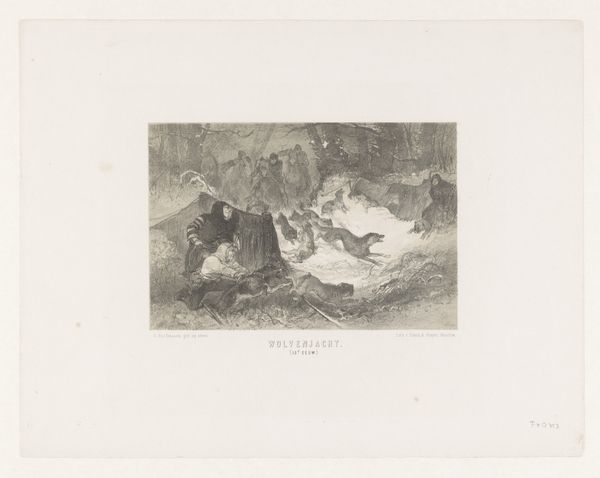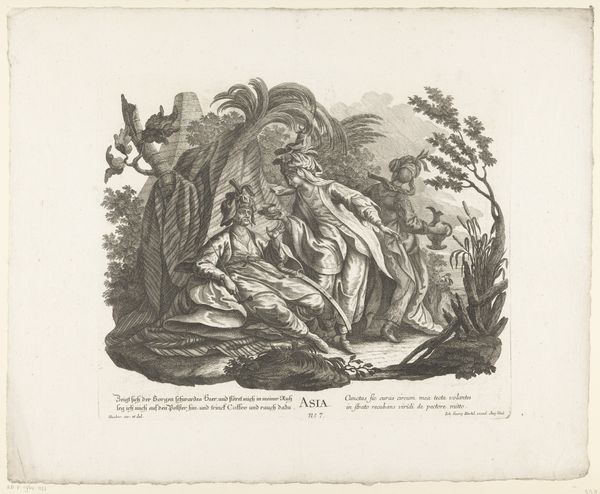
engraving
#
allegory
#
baroque
#
old engraving style
#
history-painting
#
engraving
Dimensions: height 188 mm, width 228 mm
Copyright: Rijks Museum: Open Domain
Curator: This engraving, “Justitia met een engel op een wolk,” was completed in 1638 by Michel Dorigny after a design by Simon Vouet. Immediately striking is the baroque dynamism, swirling with heavenly bodies. Editor: It certainly conveys an atmosphere of elevated morality, of soaring above earthly concerns. The delicate rendering of the figures on the clouds, well, it all feels terribly…floaty. But what can we say about Justitia herself? Curator: Well, traditionally, Justitia embodies justice and fairness. Note the scales she holds; a powerful, enduring symbol. However, this visual shorthand, these easily legible metaphors are often mobilized to maintain hierarchical social and political orders, particularly at the height of the Baroque era. Editor: Agreed. These are well-known and readily-decipherable allegories. But the angel floating towards Justitia—the hopeful upward gaze—I find them compelling. Justice seems, quite literally, delivered from above. Curator: Exactly. It reinforces a particular socio-political power structure: the concept of justice originating from an inherently hierarchical higher power. Consider also how these visual tropes, of the female personification of virtue and angels as messengers, have been wielded throughout Western history. Often, they are instrumental in justifying laws that disproportionately affect women. Editor: So you are thinking of this figure within its historical moment as participating in potentially gendered forms of social control? Curator: Precisely. And not just gender. By situating such visual culture within a larger frame of power, race, and economics we might, indeed, read its enduring legacies in contemporary law and order narratives. Editor: These angelic visitations, the floating symbolism—they tell a more complex story of the ideals societies aspire to, while perhaps glossing over very real power imbalances that, as you suggest, remain strikingly present. It brings a fresh layer to this historical symbol, now, doesn't it?
Comments
No comments
Be the first to comment and join the conversation on the ultimate creative platform.
